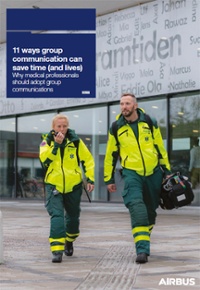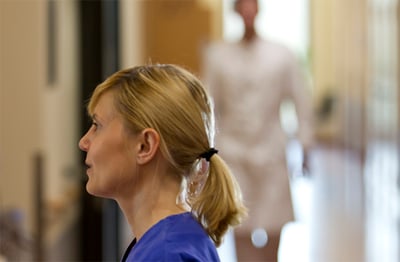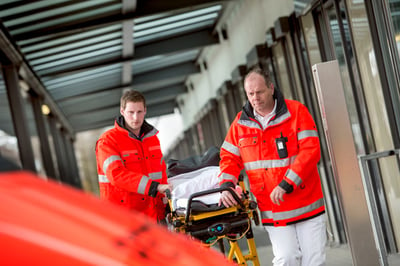There are three common situations where one surprising thing can really make a difference for medical teams and healthcare professionals. This one thing can save time, increase productivity and help improve the quality of care. How is this possible…and what is it?
Medical teams and healthcare professionals understand what mission critical really means. They need to be ready to make instant decisions, as even an extra second could be the difference between life and death.
Communicating in a group instead of one-to-one can make that difference. Group communication is the one surprising way to increase productivity in healthcare.
This blog post describes three everyday situations where group communication can really save time for medical professionals – and where group communication could also save a life.
And that’s not all - there are also eight more situations where group communication can make a difference. Download the helpful guide “11 ways group communication can save time (and lives)”.
Group communication is ideal when a mobile device user wants to instantly share information between several people.
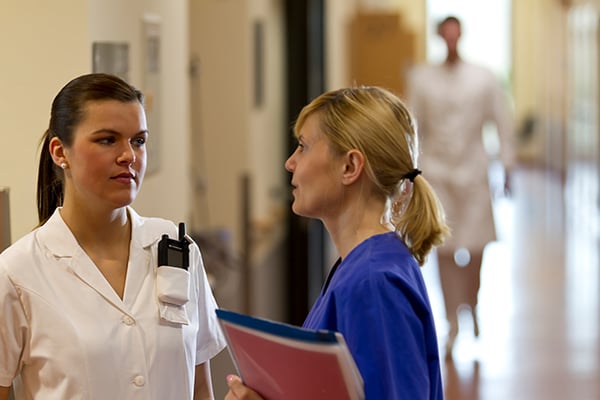
Group communication can make a real difference for medical teams in these three situations:
1. Everyday communication
2. When an extra pair of hands is needed
3. Dealing with trauma patients.
Let’s start with the most common situation – everyday communication.
1. Everyday communication
Think about the daily routines of medical teams. How often does a nurse need to call the lab during the day? How much time does that take? Do they get an answer every time? How often is the line busy?
With group communications, the nurse could simply push one button or key on the mobile device – a smartphone or a radio - and speak. And the lab would be sure to hear what the nurse says.
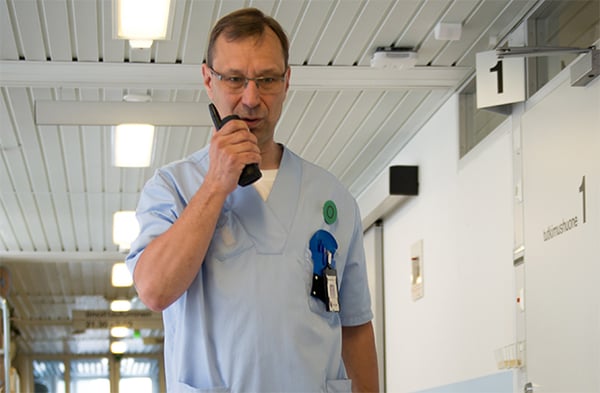
One hospital in Finland adopted this simplest type of group communication between just two departments, Accident and Emergency Services A&E and the lab. They reported that nurses saved up to three hours every day. What would the savings be if the whole hospital adopted group communication for all similar routine tasks?
Imagine - such a simple way to get faster, better day-to-day communications.
2. An extra pair of hands needed
Nurses often need a hand turning a patient around in their bed. Usually, they need to leave the room to look for a colleague.
With group communication, the nurse can simply push a button or key and speak to ask for assistance. This is much better than walking around trying to find someone to help.
What’s more, the nurse will know when help will arrive and instead of leaving the patient, can use the waiting time to care for them.
It’s a straightforward way to make everyday life easier for medical teams - and more efficient for the whole hospital.
An example is the North Karelia Central Hospital in Finland, which took unofficial measurements of the steps taken by nurses on duty. Group communication between just two departments, A&E and the lab brought a 40% reduction in the step count for nurses. That saves time …and feet.
3. Trauma patients arriving
Dealing with trauma patients may not be an everyday task, but it may be the most critical situation.
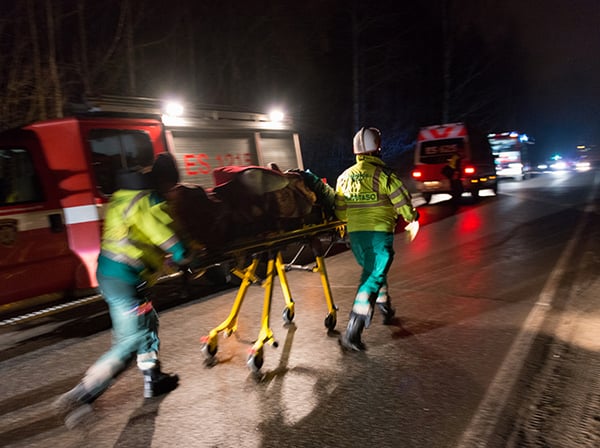
Think about a trauma patient who is bleeding out and needs an X-ray and an operation. While the patient is being wheeled from X-ray to the emergency room and to the theatre, the medical staff are busy making calls on their phones - send for blood, order lab tests, reserve the operating theatre.
Most hospitals still call the trauma team and the support functions separately, one person at a time. Calling everyone in the trauma team one-by-one can take 15-20 minutes or even longer, an enormously long time when every second counts.
But there is a better way. Instead of calling everyone one-by-one, the trauma team could use group communication.
A single group call can reach everyone in the trauma team at once. In less than a minute, everyone in the trauma team and support functions can get the same information at the same time. And if the patient’s condition changes on the way, another short group call is enough to bring everyone up to date.
The result? Arriving trauma patients can be treated faster, saving minutes during the critical golden hour of emergency medicine.
Using group calls to deal with trauma patients has been proven at the North Karelia Central Hospital in Finland. The trauma care process is now 20 minutes faster than before.
Alerting and informing the whole team at once would also speed up response in other emergency situations faster - think about emergency caesarean sections, cerebral infarctions, or resuscitation situations, for example.
Handpicked related content
What are two problems everyone has with in-hospital communications - and how to solve them?
On this video: two valuable tips for hospitals and medical teams on how they can improve their communications.
https://vimeo.com/275596759
How to adopt group communications
There are three ways a medical team can improve its productivity by moving from one-to-one phone calls to professional group communications.
1. Adopting a push-to-talk app. A professional push-to-talk app such as Tactilon Agnet 500 from Airbus delivers secure group communications.
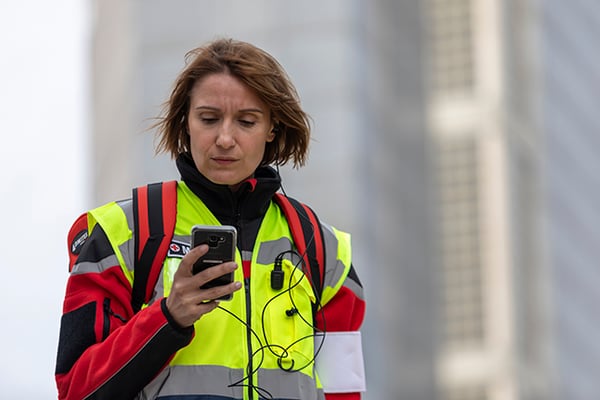
2. Using TETRA groups in smart devices. A local TETRA network operator may offer the Tactilon Agnet 800 smartphone app for group communication. In this case, it might be possible to set up groups that would connect teams to particular rescue organizations or the police.
3. Using a TETRA network. The healthcare organization or hospital could also join a public safety TETRA network, or set up a local, Claricor TETRA network to cover the operational area. In both these cases, medical teams would use TETRA radios for group communication.
This blog post gave just three examples of common situations where group communication can make the daily work of medical teams more efficient – and also improve the quality of care.
There are eight more reasons for medical professionals to adopt group communications. Find out what they are by downloading “11 ways group communication can save time (and lives)”.
It’s clear that group communication can save significant amounts of time for medical professionals. A faster response improves the productivity of medical teams. Together with more efficient patient care, this can lead to fewer hospital days needed, which in turn means savings for society as a whole.

